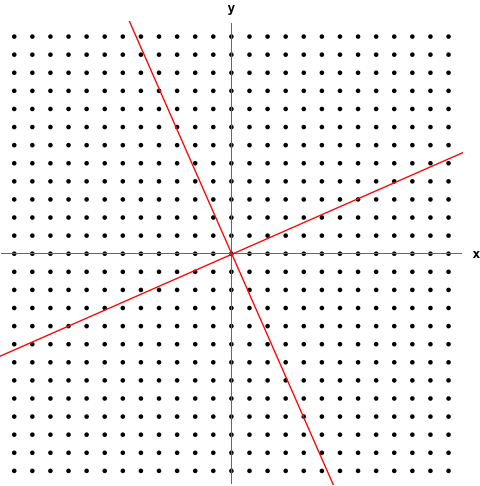If you want to find a quick answer to a question, where do you go?
Google, most likely.
If you want to help students from half a dozen disciplines understand how the elements of linear algebra apply to them, where do you go?
Again, Google. But this time, think outside the search box.
That’s one of the tricks Erik Van Vleck, a professor of math at KU, uses to help students learn linear algebra. Students in all disciplines use Google to search for information. Van Vleck pushes them to look at the search engine in mathematical terms, though, asking: “What does Google do when you put in search terms?”

This semester, Van Vleck coordinates two dozen sections of Calculus I and teaches a freshman seminar in the computer age and computational mathematics. Students in the classes come from majors like biology, physics, engineering, computer science and, of course, mathematics. Each of those disciplines applies math to its own types of problems, but students need the same basic understanding of concepts like derivatives, matrices and eigenvectors.
To help students grasp those abstract concepts, Van Vleck looks for problems and examples that apply across disciplines.
“I’m trying to give them examples that everybody knows,” Van Vleck said.
That’s where Google comes in.
He gives students an article that explains how Google’s bots troll the web, gathering information about pages and determining how they are connected to one another. From there, Google’s computers construct matrices and eigenvectors that ultimately determine what shows up on the results page of a search.
Only Google’s engineers and computer scientists know all the elements of the company’s search algorithm. But by relating those abstractions to everyday life, Van Vleck not only engages students in problem solving but helps them learn better, as well.
“Part of my belief is that if people are comfortable with context, it’s easier to understand things,” Van Vleck said. “Abstraction is great, but often we map back to context we’re comfortable with or familiar with.”
Van Vleck learned this firsthand when he was a new faculty member. He and other recent mathematics Ph.D.s attended a seminar where they received equivalent mathematical problems. One of the problems was phrased abstractly, the other in terms of drinking beer.
You can guess where this is going.
“All the math Ph.D.s did better in the beer example because we could see how to solve the problem even though it was the same as the abstract problem,” Van Vleck said.
Van Vleck uses other techniques to help students learn, including a flipped approach in which he gives students pre-class assignments, builds on those assignments in class, and then has students follow up with related assignments out of class.
He has also boiled down a 400-page textbook to 20 pages of notes with hyperlinks to additional information for students who want to go beyond the essentials.
“If students can master those 20 pages,” he said, “they can pass the class.”
All of Van Vleck’s strategies are part of a pedagogical approach known as “just-in-time teaching,” which aims to make the most of classroom time by focusing on what students need most.
Here’s a link with more information about the just-in-time strategy (There was a link, but the page no longer exists).
You can also search Google, as long as you’ve done your math homework first.
Doug Ward is an associate professor of journalism and a fellow at the Center for Teaching Excellence. You can follow him on Twitter @kuediting.
Tagged active learning, flipped courses, hybrid learning, strategies in math courses, just-in-time teaching